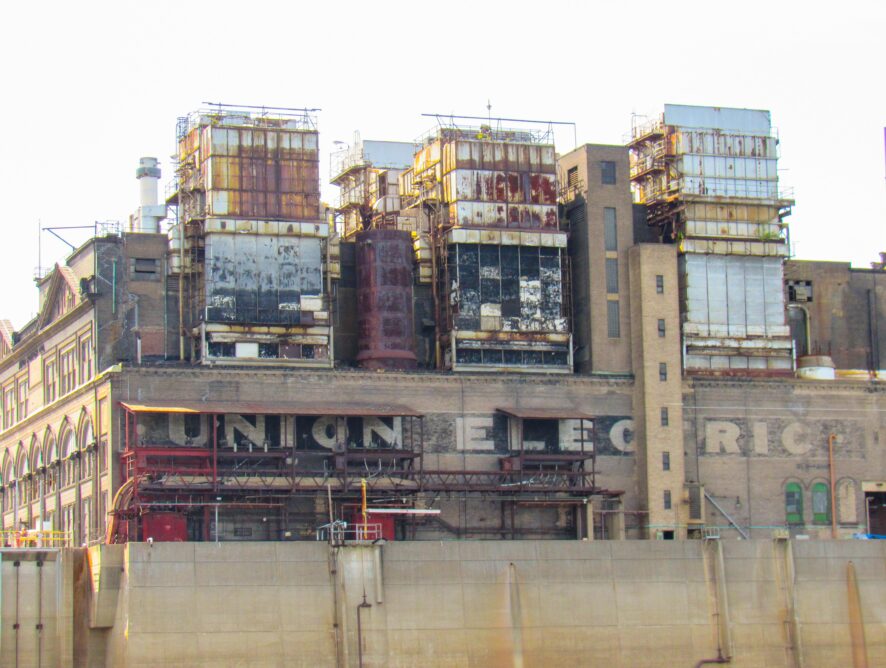Growing up in the Rust Belt, I bristle at the ease with which people dismiss formerly-important neighborhoods. St. Louis’s Near North Riverfront is no exception. On a road trip to STL with my son last summer, Several well-meaning online commenters recommended avoiding the Near North Riverfront, where I had wanted to photograph a few surviving advertising remnants from St. Louis’s beverage industry past. Locals warned me not to leave my car in that area, under any circumstance. They described the environment as a predator’s haven; random violence, theft, or car-stripping awaited anyone reckless enough to leave their car in that area.
In the Rust Belt, areas like the Near North Riverfront are either “functional-and-ignored” or “forbidden” – in both perception and policy.
I’m disappointed in myself for listening to them. My entire Near North Riverfront experience was limited to a view from the Mississippi River. This photograph is the view of the back of the Ashley Street Power House, a landmark in St. Louis. Built in 1902, the front of the Ashley Street Power House is a worn beauty – a massive, turn-of-the-century Beaux-arts neoclassic. Union Electric Co. built three similar plants in Near North Riverside at the turn of the century. All three offloaded coal from river barges and boiled steam to heat the hundreds of buildings in downtown St. Louis. Only the Ashley Street Power House remains operational. At one time, the plant housed 34 working boilers; the coal dust and the functional brutalism of its backside remind us that this place was basically a caged inferno for decades.
Policies created to drive traffic to the nearby casino have kept people off the streets (many still paved with the original stone block) of Near North Riverside. But these are the lost opportunities I find most interesting. History can be viewed as a series of victories (“history is written by the winners”) or as a series of masteries. The former is a binary distinction that rewards one party over another, based on the “winner’s” adherence to their preferred ethics, mores, or goals. The latter measures importance in velocity; it is interested in motion (both progress and regress) and change… and the inspirations behind those changes.
The Ashley Street Power House is a testament to a “mastery”-based history. It heated and powered hundreds of city blocks at a time when St. Louis was packed with westward migrants and an economy designed to support them. In 1902, St. Louis was still in the process of supplying electricity to its buildings, and yet people managed to safely harness massive, Vulcan fireblasts and use them to make an entire city more liveable.
To ignore these accomplishments (or worse, reveling in them like some kind of “decay porn”) is like sleeping through your own birthday party. Policies and prejudices may keep you away, but the Ashley Street Power House is a titan in our midst. It’s a historical landmark, so the building won’t go anywhere, but we can witness its meaning and importance decay faster than a neglected facade.
